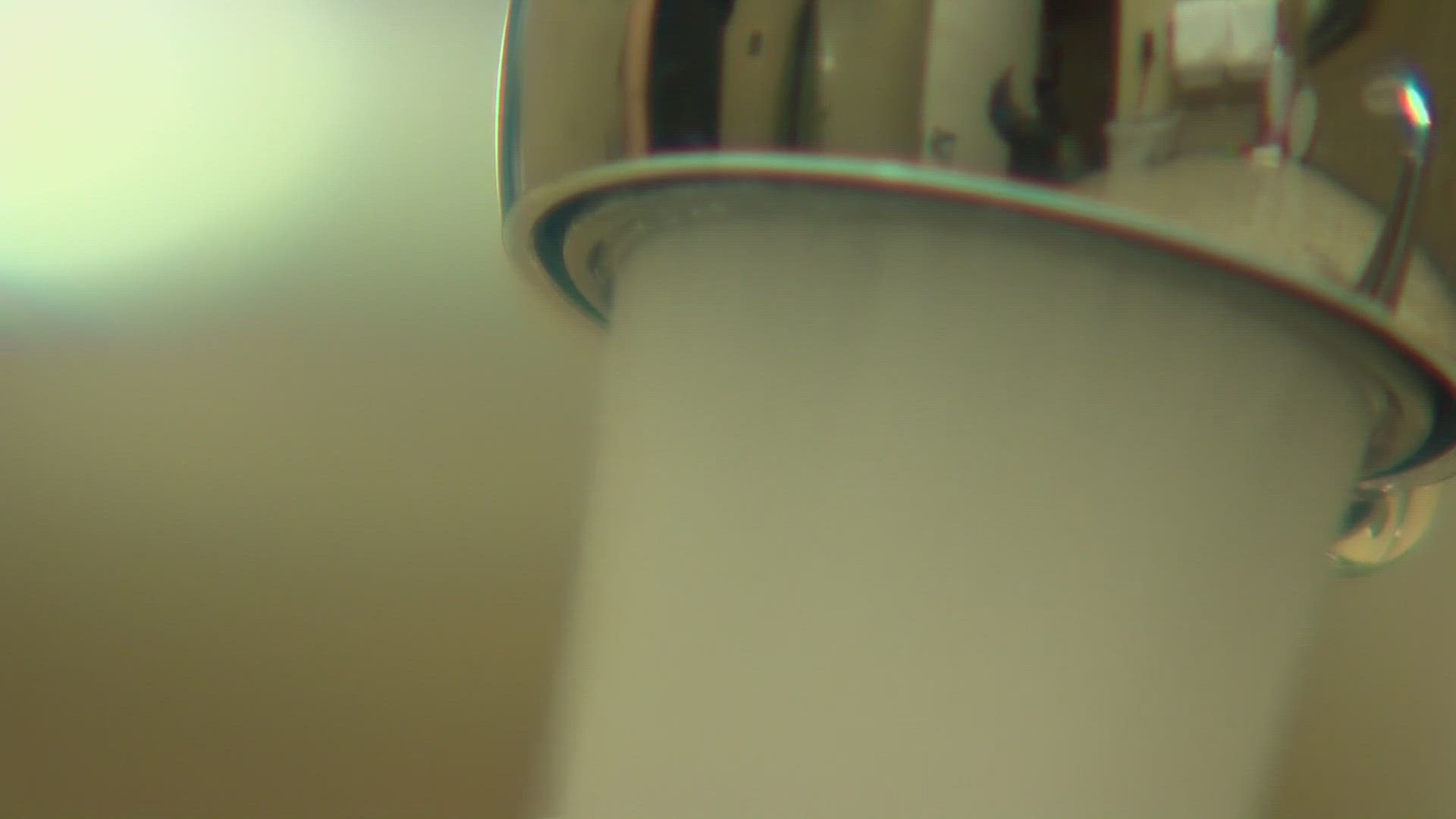SILVERDALE, Wash. — People living at one mobile home park in Silverdale feel drinking out of the sea is about as safe as a sip from their sink.
"I bathe with it," said Bob Burns, Clear Creek Mobile Home Park resident. "I launder with it. That's it. I won't even wash my car with it."
The small community in Kitsap County is one of 14 wells that have detected levels of Polyfluoroalkyl, or PFAs, above the Washington State Department of Health’s recommended level.
Commonly referred to as PFAS or “forever chemicals,” for decades, the synthetic compound has been found in items like packaging, cleaning products and foams. The harmful chemicals then find their way into our water.
“There’s really no safe level of these chemicals in our bodies,” said Judit Marsillach, assistant professor of toxicology at the University of Washington School of Public Health
A new Washington State Department of Health dashboard tracks PFAS levels in water supplies. Only about a quarter of water systems have submitted results so far.
It identifies water systems that have potentially dangerous levels of chemicals in their water.
The water sources identified have either shut off their well, pursuing PFAS mitigation or limiting the use of the well. Clear Creek Mobile Home Park is the only site identified that has no listed action plan, according to the state.
“They’re waiting to hear what the maximum contamination level is before they take action,” said Mike Means, Washington State Office of Drinking Water.
The sources identified have a high enough level to trigger "state action." An expected stricter maximum contaminant level will be established by the Environmental Protection Agency early next year.
“That doesn't help the people that live here now," Burris said. "There's too much bureaucratic crap. They need to handle this."
“We’re constantly having to clean our showers out, our washers out," said Art Hammond, Clear Creek resident. "The sinks."
Hammond has lived at the park for two decades.
“The water system has been an issue since I’ve been here,” Hammond said. “You can turn your faucet on and can smell the chlorine so heavily from them treating the well.”
Northwest Water Systems manages the water supply and told us the sediment is not a health concern, just a sign of an aging water system. They said the chlorine levels meet the state’s regulatory standards.
“Any activated carbon filter, such as a Brita, will effectively remove the free chlorine and other chlorinated compounds causing undesirable taste and odor from the water,” Northwest Water Systems said.
However, a letter from the state highlights the problem they can’t see or smell: PFAS.
Their well has nearly three times the Perfluorooctanesulfonic acid deemed by the state safe to consume.
“Pretty much a really bad combination,” Hammond said.
Homeowners at the park told KING 5 they spend about $40 a person per month on water bottles because they don’t feel safe drinking their running water.
Northwest Water Systems was notified of the results in February. Two additional samples confirmed the high levels of PFAS.
We took those findings to University of Washington toxicology professor Judit Marsillach.
“It is not good to see levels that are above the limit,” Marsillach said. “They’re not extremely higher to me. Still not safe.”
Down the road from Naval Base Kitsap, Clear Creek is just one example of a community near a military base detecting PFAS in their water.
Across the country, firefighting foams containing the chemicals were used in military training exercises for decades.
Marsillach said pregnant women, children and elderly people are especially at risk. Researchers found exposure has led to an increased risk of cancer, fertility and kidney disease.
Northwest Water Systems engineers are actively working on PFAS treatment plans but told KING 5 cost is a big barrier.
For example, to eliminate the PFAS from Clear Creek’s water supply would cost up to $200,000, according to NWS.
However, the problem’s not going away anytime soon. Plus, the issue is not just present near bases, airports and factories.
Scientists said 98 percent of people on Earth have detectible levels of “forever chemicals.”
“We call them persistent organic pollutants. They can stay in our environment for about 1,000 years,” Marsillach said.
Marsillach said teaching people about the dangerous chemicals and government agencies setting safety standards will make a difference.
The state dashboard doesn’t include private well, those serving less than 15 households, or the Department of Defense.

